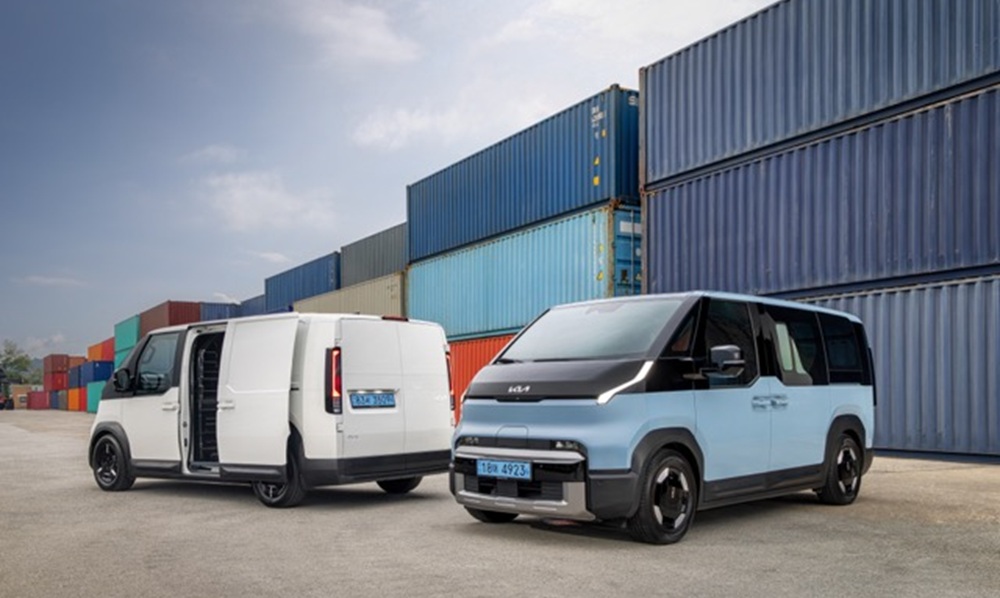Kia Corporation has formally launched the Kia PV5, its first dedicated Platform Beyond Vehicle (PBV), into the vehicle market.
Debuting in Korea and soon to roll out across Europe and global markets in 2026, the PV5 is a major move in Kia’s transition from traditional vehicle manufacturing to scalable, software-driven mobility solutions.
T&FME was in South Korea last week where Kia demonstrated how the vehicle can be a family car, van or passenger fleet asset.
It was also confirmed that the vehicle has been deployed to NEOM and Red Sea Resort ahead of its regional launch.
Built on Kia’s next-generation all-electric E-GMP.S PBV platform, the PV5 introduces a highly modular design philosophy that supports both business and personal applications. Available in Passenger, Cargo and Chassis Cab variants, the PV5 delivers practicality, efficiency and adaptability in equal measure — targeting a diverse spectrum of users, from fleet operators to lifestyle drivers.
“The Kia PV5 is an industry-transforming modular, flexible and conversion-ready solution that adapts to the needs of modern businesses and lifestyles,” said Sangdae Kim, Executive Vice President and Head of the PBV Business Division at Kia Corporation. “With the PV5, we are delivering a new benchmark in PBV technology that combines practicality, efficiency and future-ready innovation.”
Designed by and around the customer
The PV5 is the result of a PBV-exclusive development process that actively integrated feedback from over 120 global business customers during Kia’s PBV Partners Day events in 2022 and 2023. Working alongside partners such as Uber, DHL Korea, Korea Post, Kakao Mobility, and Milwaukee, Kia refined every detail of the vehicle’s usability — from the introduction of a removable front passenger seat for added cargo flexibility to durable, stain-resistant interiors designed for demanding commercial environments.
High-roof variants feature a walk-through configuration between the cabin and cargo area, while multiple roof mounting points and L-Track interfaces enable easy installation of professional equipment such as smartphone mounts, payment terminals or shelving systems.
Real-world versatility
Built to serve both professional and personal use cases, the PV5 can seamlessly transition from urban shuttle to family adventure vehicle. The Passenger variant provides the lowest floor in its class for easy access, particularly for children and passengers with limited mobility, and offers up to 3,615 litres of luggage space with the second-row seats folded flat.
The Cargo variant, meanwhile, delivers between 4.0 m³ and 5.2 m³ of load capacity, with a low loading height of just 419 mm — sufficient to accommodate two Euro pallets. These specifications position the PV5 as a serious alternative to traditional light commercial vans.
For off-grid operations, Vehicle-to-Load (V2L) capability allows users to power external equipment or devices with up to 3.68 kW of electricity, making the PV5 suitable for everything from film shoots to remote workstations and camping expeditions.
Distinctive design, practical benefits
Echoing Kia’s Opposites United design language, the PV5 pairs a sleek, futuristic upper body with a durable, technical lower section. Signature lighting seamlessly integrates into the A-pillars, while black cladding and modular bumper elements enhance both robustness and reparability.
Functionality drives every design choice: the LED headlamps are integrated into the bumper to reduce damage risk, while the three-section front and rear bumpers can be replaced individually to lower maintenance costs. Expansive glazing and a low beltline improve visibility for city driving.
Inside, a clean, geometric dashboard maximizes storage and functionality, complemented by a 7.5-inch digital cluster and 12.9-inch navigation screen. The Android Automotive-based infotainment system supports third-party app integration through the Pleos App Market, providing real-time fleet management tools and vehicle body control for conversion models.
Engineering and performance
At its core, the PV5 is powered by Hyundai Motor Group’s E-GMP.S (Electric-Global Modular Platform for Service), designed to standardize complex systems and optimize space through an Integrated Modular Architecture.
Performance and Range:
-
Passenger model: up to 120 kW power and 412 km range (WLTP)
-
Cargo model: up to 120 kW power and 416 km range (WLTP)
-
All battery options support 30-minute fast charging (10–80%)
Battery options range from 43.3 kWh LFP to 71.2 kWh NCM, depending on configuration. The low-mounted battery contributes to a lower centre of gravity, enhancing stability, ride comfort and agility — qualities rarely associated with commercial vehicles.
The PV5’s Smart Regenerative Braking system automatically adjusts deceleration based on traffic flow and driver behaviour, while advanced driver assistance technologies include Highway Driving Assist, Smart Cruise Control, Blind-spot Collision-Avoidance, and Parking Collision-Avoidance Assist.
Inclusive and accessible
Furthering Kia’s goal of mobility for all, the brand is introducing a Wheelchair Accessible Vehicle (WAV) variant of the PV5. Featuring a gentle side-entry ramp, universal securing system and low-floor layout, the WAV supports independence and comfort for users with limited mobility — reflecting Kia’s broader strategy to serve diverse mobility needs in an aging global population.
Conversion-ready ecosystem
Every PV5 is engineered for factory-certified conversions through Kia’s dedicated PBV Conversion Center. Using a standardized base architecture, vehicles can be quickly adapted for specialized purposes such as delivery, hospitality, healthcare, or emergency response.
Kia supports these partners with an online Conversion Portal System offering 3D CAD data, homologation resources and a technical hotline, ensuring consistent and safe conversion standards across global markets.
Toward a new mobility era
The PV5 is the first in a family of modular PBVs — to be followed by the PV7 in 2027 and PV9 in 2029 — as Kia targets 250,000 PBV sales by 2030.
Through this next-generation lineup, Kia aims to pioneer a scalable, software-driven mobility ecosystem that bridges personal and commercial applications, reimagining how people and businesses move, work, and connect.
“The PV5 is more than just an electric vehicle — it’s a platform for ideas, experiences and enterprise,” added Kim. “It’s designed to empower customers to redefine what mobility means to them.”



